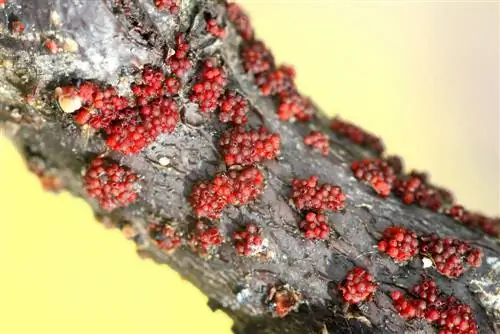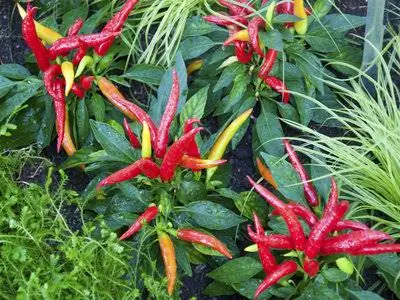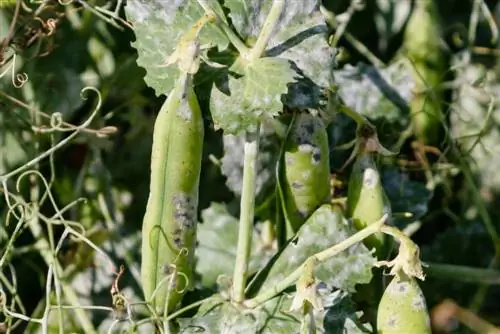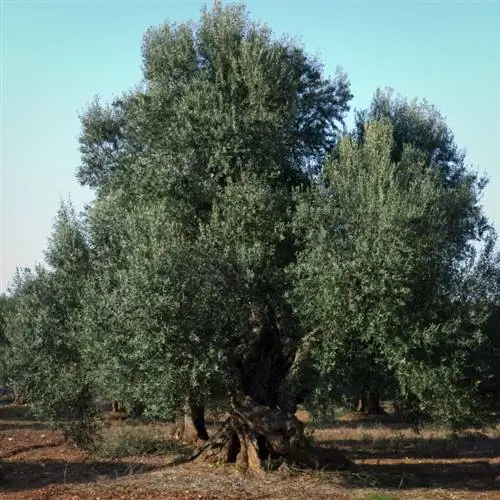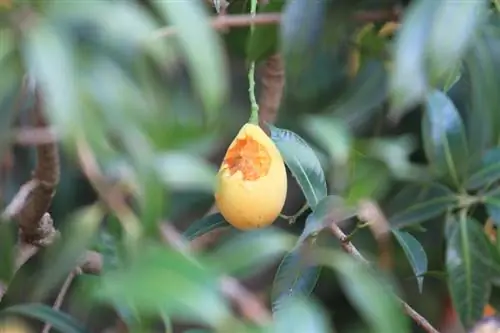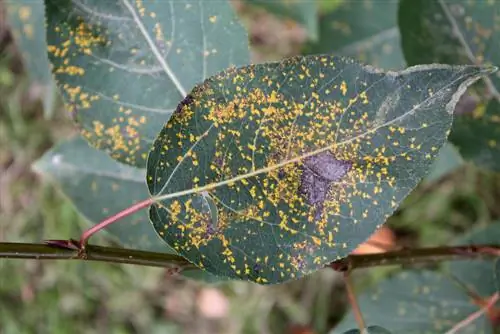- Author admin [email protected].
- Public 2023-12-16 16:46.
- Last modified 2025-01-23 11:21.
Diseases on trees are often caused by microorganisms. These are usually fungi, but bacteria and, more rarely, viruses can also cause the typical damage to leaves and wood. In addition, an unsuitable location or incorrect care also lead to harmful symptoms or make illness possible in the first place.
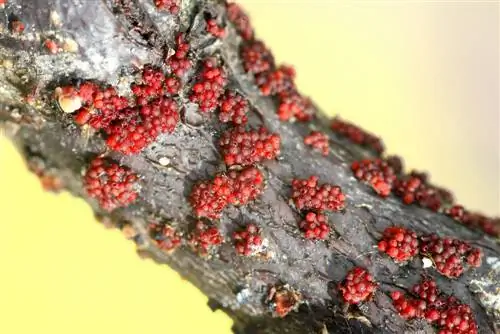
What common tree diseases are there and how can they be treated?
Tree diseases are often caused by fungi, bacteria or viruses and usually affect leaves and wood. Common diseases include wood decay, leaf spot, red pustular disease, scab, shotgun disease and rust fungi. As a preventive measure, a sparse treetop helps to allow sufficient light and air into the interior and to promote rapid drying of the leaves.
The most common tree diseases
Trees can be attacked by microorganisms and thus become ill or suffer due to an unsuitable location, too much or too little moisture and a lack of nutrients. However, in the event of a non-parasitic disease, the trees are weakened and can no longer adequately defend themselves against fungi, bacteria or viruses. Further illness is often the result.
Wood decay tree diseases
Typical tree diseases can affect the leaves, but often also the wood. Wood-decaying fungi in particular pose a danger. These are often invisible fungi, although species with pronounced fruiting bodies such as honey fungus or tinder fungus are not uncommon.
Red pustule disease
This is a weakness or wound parasite that primarily affects deciduous trees. Fruit trees such as plums, cherries, apricots and all types of pome and nut fruit are often affected, as are ornamental trees such as maple, robinia, hornbeam and boxwood. The fungus develops mainly on dead wood and on dead parts of living trees. From there it attacks he althy areas, provided it can find branch stubs and other wounds to penetrate.
Leaf spots
Leaf spots can have very different causes. In addition to fungi, bacteria and viruses, the spots can also be caused by cell sap-draining or leaf-eating pests. Leaf spot diseases caused by fungi occur primarily as a result of damp weather, particularly in late summer and autumn. Infected leaves should be removed generously, especially if they have already fallen off. The various pathogens often overwinter there, which is why such plant material never belongs in the compost.
Leaf Tan
This fungal disease is a typical phenomenon of damp spring and summer weeks, which initially appears as small, rounded, reddish-brown spots on the leaves. If the damp weather continues, the spots will soon cover the entire leaf. If the infestation is severe, leaves may fall. Especially in fruit trees, the fruits can also become infected.
scab
Scab is also a widespread fungal disease. The infection often occurs in early spring when temperatures are quite cool, when the spores spread by wind and rain are transferred to the leaves. Wet leaves and high humidity promote its spread. Over the summer months, new spores continue to form, which then overwinter on the ground in fallen leaves. Scab fungi are noticeable through brown, roundish spots that become increasingly larger.
Shotgun disease
Shotgun disease is also a fungal disease in which small, reddish to brown spots initially appear on the leaves. These break out later, so that the leaves with their irregular holes look like they have been shot through. If the infestation is severe, the leaves will be dropped.
Rust mushrooms
There are different types of rust fungi as they are highly specialized on certain tree species. Orange-red, reddish or violet-tinted leaf spots are typical and appear primarily on the tops of the leaves. Infected trees should be cut back generously.
Diseases with fungal pathogens
Another fungal disease is powdery mildew, which - unlike other fungal diseases - does not need moist weather to spread. Flower, fruit and branch monilia (“lace drought”) as well as wilt disease caused by various Verticillium fungi also occur frequently in many tree species.
Diseases with bacterial pathogens
The bacterial pathogens are primarily fire blight and bacterial blight, which occur in many trees, especially fruit trees, and can cause considerable damage. Like fungi, the bacteria enter the tree through wounds and other open areas and spread from there.
Typical diseases in selected tree species
The following tables provide you with an overview of which types of diseases occur in certain tree species that are often cultivated in gardens. If a tree species is not explicitly mentioned, it is a robust species that is not very susceptible to disease - which, despite its robustness, is of course not immune to infection.
Fruit trees
| Fruit | Common diseases |
|---|---|
| Apple | Scab, mildew, fruit tree canker, collar rot, stippling |
| Pear | Scab, pear rust, fire blight |
| Plums, Mirabelles, Reneclodes | Rust, shotgun disease, fool's disease, sharka |
| Peach, Apricot | Curly disease, scab, chlorosis |
| Sweet cherry, sour cherry | Shotgun disease, Monilia |
Deciduous trees
| Deciduous tree species | Common diseases |
|---|---|
| Maple (Acer) | Powdery mildew, wilt, leaf spot pathogen, leaf browning |
| Beech (Fagus) | Leaf Tan |
| Oak (Quercus) | Powdery mildew |
| Chestnut (Aesculus) | Powdery mildew, wilt, rust, leaf browning |
| Linde (Tilia) | Leaf Tan |
| Trumpet tree (Catalpa) | Wilt |
| Elm (Ulmus) | Wilt |
| Willow (Salix) | Powdery mildew, rust, leaf spot pathogen |
| Crabapple (malus) | Powdery mildew, shotgun disease, scab |
| Ornamental cherry (Prunus) | Shotgun disease, scab, wilt, leaf spot pathogen |
Conifers
| Coniferous tree species | Common diseases |
|---|---|
| Araucaria (Araucaria) | pin tan |
| Yew (Taxus) | Wilt |
| Spruce (Picea) | Wilt |
| Pine (Pinus) | Rust |
| Larch (Larix) | Gray mold rot, larch canker |
| Cypress (Chamaecyparis) | Phytophthora blight, needle tan |
| Fir (Abies) | Fir canker, rust, gray mold, needle tan |
| Juniper (Juniperus) | Rust |
| Cypress (Cupressus) | Phytophthora blight |
Tip
Most tree diseases can be kept at bay quite well if the crown is kept light - this way the leaves dry faster and there is enough light and air inside the tree crown.

